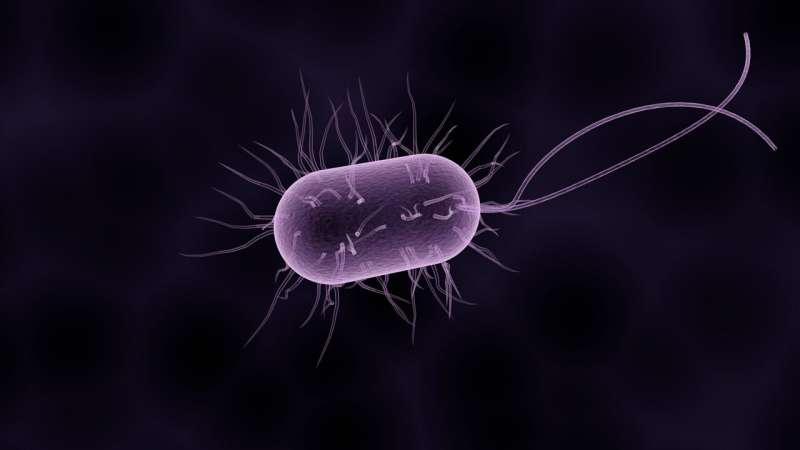This article has been reviewed according to Science X's editorial process and policies. Editors have highlighted the following attributes while ensuring the content's credibility:
fact-checked
peer-reviewed publication
trusted source
proofread
Study sheds new light on mechanism of robust motility of flagellated bacteria

Flagellated bacteria are propelled by the rotation of helical flagellar filaments, each with a flagellar motor at its base. Taking Escherichia coli (E. coli) as an example, each cell has 3–7 flagella whose rotation as a helical bundle enables the cell to move smoothly. The flagellar motors are sensitive to the load they drive, generating varied torque at different speeds. The motor torque remains approximately constant within a knee speed, while dropping rapidly above the knee speed.
It is believed that when bacteria swim in a free liquid environment, the flagellar motor is under high load since flagellar rotation speed is typically lower than the knee speed. However, the results of a study published online in Science Advances, conducted by a research team led by Zhang Rongjing and Prof. Yuan Junhua from the University of Science and Technology of China (USTC) of the Chinese Academy of Sciences, showed inconsistencies.
The researchers discovered an incomplete set of stator units in flagellar motors of bacteria through torque-speed measurements, dispelling the previous misunderstanding in the mechanism of flagellar motors that the motors are under high load during bacterial swimming.
Additionally, they carried out motor resurrection experiments and measured the torque-speed relationship when bacteria swim in media with different viscosities. In the motor resurrection experiments, the rotation speed was found to increase step by step when a bead was suddenly attached to a filament. The results revealed that the flagellar motors were under intermediate load and had an incomplete set of stator units that was half full.
With a half-full complement of stator units, swimming bacteria can adapt to a medium with high viscosity by increasing the number of stator units. To test the robustness, the researchers designed a microfluid chamber consisting of three separate streams with laminar flow to rapidly change the viscosity. The result showed that the flagellar rotation speed plunged after a sudden increase in viscosity and then gradually increased.
The findings of this study demonstrated the robustness of the flagellar rotation against changes in load conditions.
More information: Yuhui Niu et al, Flagellar motors of swimming bacteria contain an incomplete set of stator units to ensure robust motility, Science Advances (2023). DOI: 10.1126/sciadv.adi6724
Journal information: Science Advances
Provided by Chinese Academy of Sciences




















